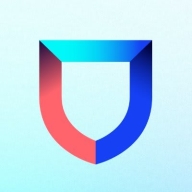


Lacework FortiCNAPP and ExtraHop Reveal(x) 360 target cloud security solutions and network detection and response. ExtraHop Reveal(x) 360 offers superior value through advanced threat detection and network visibility.
Features: Lacework FortiCNAPP provides cloud security automation, workload protection, and proactive cloud health maintenance capabilities. ExtraHop Reveal(x) 360 offers real-time threat detection, network performance monitoring, and advanced analytics for immediate threat response.
Ease of Deployment and Customer Service: Lacework FortiCNAPP ensures quick deployment and strong support channels for rapid implementation. ExtraHop Reveal(x) 360 features a streamlined process, focusing on easy integration and responsive service with comprehensive deployment support.
Pricing and ROI: Lacework FortiCNAPP offers a cost-effective solution with a straightforward pricing model that delivers a good return on investment. ExtraHop Reveal(x) 360 may be costlier initially but its network visibility and threat detection justify the expenditure with excellent long-term ROI.



SentinelOne Singularity Cloud Security protects cloud workloads, offering advanced threat detection and automated response. It integrates seamlessly with cloud environments and secures containerized applications and virtual machines against vulnerabilities.
SentinelOne Singularity Cloud Security is renowned for its efficiency in mitigating threats in real-time. The platform integrates effortlessly with existing cloud environments, ensuring robust cloud security management with minimal manual intervention. Securing containerized applications and virtual machines, it excels in threat intelligence and endpoint protection. However, improvements are needed in performance during high workload periods, and more integrations with third-party tools and better documentation would be beneficial. Users often find the installation process complex, support response times slow, and the dashboard's navigation unintuitive.
What are the key features of SentinelOne Singularity Cloud Security?In specific industries, SentinelOne Singularity Cloud Security is implemented to safeguard critical data and infrastructure. Organizations in finance, healthcare, and technology depend on its real-time threat detection and automated response to protect sensitive information. Its ability to secure containerized applications and virtual machines is particularly valuable in dynamic environments where rapid scaling is necessary.
Cloud is where your business operates, where it innovates, how it enables employees, and how it connects with customers. Adversaries know this, and that's why attacks against cloud assets in IaaS, PaaS, and SaaS environments are increasing. With Reveal(x) 360, you can mitigate the blast radius of advanced threats like ransomware and supply chain attacks with unified security across multicloud and hybrid environments in a single management pane.
Lacework FortiCNAPP provides robust cloud security, combining vulnerability management and multi-cloud insight with user-friendly controls, machine learning detection, and compliance support.
Lacework FortiCNAPP specializes in cloud security by merging machine learning anomaly detection with agent-based vulnerability management to offer detailed alerts and compliance reports. Its comprehensive approach allows continuous monitoring across AWS and Kubernetes, providing insights from an attacker's perspective. The platform offers automation and seamless Slack integration, facilitating collaborative and efficient cloud security management. Users value its ability to handle multi-cloud environments and scan IAC scripts, configurations, and compute nodes across AWS and GCP.
What are the key features?Organizations across sectors leverage Lacework FortiCNAPP for cloud security, focusing on compliance, security posture, and vulnerability management. It is widely used for monitoring AWS and Kubernetes environments, scanning IAC scripts, configurations, and securing compute nodes. It supports multi-cloud security posture management and log ingestion, enabling companies to maintain strong cloud infrastructures without dedicated security layers.
We monitor all Container Security reviews to prevent fraudulent reviews and keep review quality high. We do not post reviews by company employees or direct competitors. We validate each review for authenticity via cross-reference with LinkedIn, and personal follow-up with the reviewer when necessary.